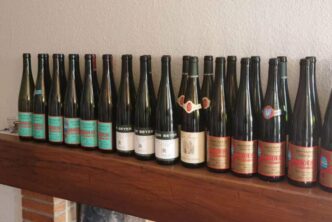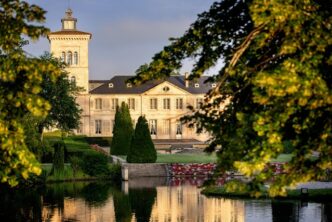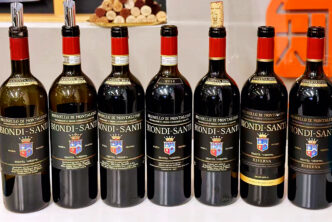Drouhin’s Clos des Mouches Blanc is a rarity in Beaune, where 86 percent of the appellation’s vines are red. And among the whites in Beaune, few ever achieve the elegance and stature of Drouhin’s Clos des Mouches Blanc. Moreover, though classified as a Beaune Premier Cru, Drouhin’s Clos des Mouches Blanc sells at prices closer to that of a Grand Cru. This year marks the 100th anniversary of the acquisition of this famed vineyard by Maurice Drouhin, the son of Joseph Drouhin, who founded the house in 1880, so I thought it was a good excuse to taste a dozen vintages from my cellar, spanning the decades of the 1980s and 1990s, and make a pilgrimage there to discover what all the fuss was about.
Frédéric Drouhin, grandson of Maurice and along with his sister, Véronique, and two brothers, Philippe and Laurent, run this family-owned estate, explained the origin of this iconic wine, what many would consider the flagship of this venerable house. Just after the end of World War I, Maurice took over from his father what was a négociant firm at the time. By Frédéric’s description, he had a “quality-driven” personality. It’s abundantly clear that he was also a visionary. He anticipated that growers would eventually start to bottle their own wines, making it more difficult for négociants to have a steady supply of grapes and wine. So, he decided to buy vineyards. Travel was difficult in those days, which meant that working and maintaining a vineyard in the Côte de Nuits, though a more prestigious locale, was impractical. He opted for what he felt was the best site in Beaune to which he and the workers could walk.
In 1921, he started buying parcels in the Clos des Mouches, recognized as a top vineyard even before the official classification system came into effect. Bordering Pommard to the south, Clos des Mouches takes its name from the bees who came there to gather pollen. (Mouches, though literally “flies”, is Burgundian slang for bees). Bit by bit, Maurice acquired roughly just over half of the entire vineyard—40 different parcels comprising 14 ha (35.6 acres). At that time, the vineyard was planted almost exclusively with Pinot Noir, the grape for which Beaune was best known. Maurice’s early task was to replant the vineyards following the devastation of WWI and phylloxera. He followed the tradition of the time by including a small percentage of white grapes—chiefly Chardonnay and Pinot Beurot (aka Pinot Gris). These whites would be harvested together with the reds and co-fermented to provide extra sugar to boost the final alcohol without adding significant flavor. Think of it as a kind of vineyard-based chaptalization necessary at a time when ripening Pinot Noir was always a challenge. That practice explains why, even today, there are white varieties co-mingled with reds in some Burgundy vineyards.
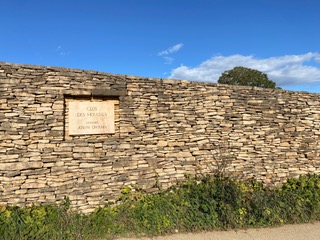
Maurice opted for Chardonnay and planted it in separate rows so it would be easier to care for the vines. Then, in 1928, by a quirk of nature—an act of God—the Chardonnay ripened too late to be co-fermented with the Pinot Noir. Maurice, always a parsimonious farmer, decided to make two barrels of white “house” wine. When he tasted it, eureka, he realized he had something unique and excellent, so, starting in the 1930s, he replanted the entire vineyard equally with Pinot Noir and Chardonnay, a planting pattern that has remained to this day.
Standing in the vineyard, its heterogeneity is apparent. Its four terraces of vines display not so subtle differences of exposure, elevation, and vine age. Even a cursory glance at the ground by a non-geologist such as myself reveals soils and rocks of different colors that must harbor different minerals and nutrients. Some vines are planted in an east-west direction, while others have a north-south orientation. Frédéric emphasizes that each of the 35 to 38 parcels receives individual care. They are harvested and vinified separately as often as possible. Making the final blend from these different wines is like completing a puzzle, according to Frédéric, searching for just the right combination to create the Clos des Mouches style. The batches that do not make the cut for Clos des Mouches, usually about 20 to 30 percent, wind up as part of the blend for Drouhin’s Côte de Beaune, a small, 25-ha, appellation that is many cuts above the more well-known and much larger, Côte de Beaune-Villages.
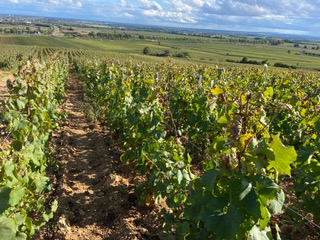
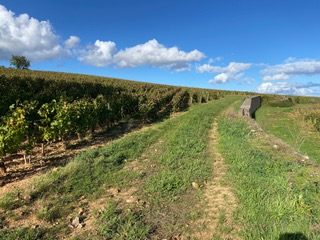
The Drouhin family has a deep and emotional attachment to the vineyard. They bury their dogs there. It’s where Robert, Maurice’s son, always went to find worms when he went fishing. One year, according to Frédéric, he found no worms, which startled him. That revelation convinced him that they needed to move forward with organic viticulture to rejuvenate the soil, which they did starting in 1988. Frédéric notes that Clos des Mouches has acted as a laboratory for biodynamic practices since their portion of the vineyard was large, contiguous, and devoid of “pollution” from their neighbors. Barely a decade later, in the mid-90s, Drouhin moved to biodynamic practices in Clos des Mouches, practices that have spread to the rest of their domaine. Now, they farm the entirety of their domaine biodynamically, according to Frédéric.
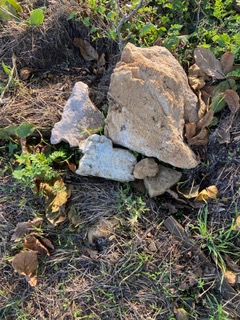
The winemaking is simple and non-interventional. At Drouhin, they press the Chardonnay and give it a little skin contact, depending on the vintage, according to Frédéric. Then, the Clos des Mouches Blanc is fermented and aged in oak barrels made by a variety of coopers, about 25 percent of which are new. Drouhin clearly considers the vineyard and the wine Grand Cru, despite its official Premier Cru classification. The market does so as well, since their Clos des Mouches Blanc commands anywhere from a 50 to 100 percent premium over other producers’ wines from the same vineyard. Frédéric is quick to note, however, that that premium occurs in the marketplace since they price the wine only about 25 percent higher than their other Beaune Premier Crus. Consumers and the press often ask Frédéric why they don’t replace the Pinot Noir with Chardonnay since the Clos des Mouches Blanc commands a higher price, 25 to 30 percent more, than the Clos des Mouches Rouge. His succinct response: “Because we like it.” After tasting six vintages of the rouge with him, the 2019 to the 1978, I can see why!
I tasted the following dozen vintages of Drouhin’s Clos des Mouches Blanc from my cellar in preparation for my visit to Maison Drouhin in Beaune last month,and then tasted a few more directly at the domaine. Although Frédéric opined that the Clos des Mouches Blanc started to enter its drinking phase at about seven years, the tasting of older vintages showed just how brilliantly they developed, providing great pleasure even at their 35th birthday and beyond. From these tastings, several things are clear: 1) Clos des Mouches Blanc has uncommon elegance and stature for a white wine from Beaune 2) Though fermented and aged in oak barrels, none of the wines, not even the youngest, tasted oaky. You felt the effects of oak—a suave richness—without tasting its presence. 3) Similar to white Grand Cru Burgundy, Clos des Mouches Blanc is tightly wound when young 4) It starts to unwind by age seven, reaches a plateau at about age ten to 12, and then remains there, depending on the vintage, for 30-plus years.
Clos des Mouches Blanc may have been created by an Act of God almost a century ago, but it is men and women—the Drouhin family— that have made their Clos des Mouches Blanc the Grand Cru-like icon it is today.
The wines: Going back four decades of Clos des Mouches Blanc, 1982-2019

Please note that all the wines in this report from the 2000 vintage (included) and younger I tasted in Drouhin’s cellar, except as noted, with Frédéric Drouhin in Beaune in September 2021. All wines in this report from vintages before 2000 came from my cellar. Relative to the drinking windows of some of the wines in this report, readers may be surprised to find that in many cases I have given the same year – 2025 – as the upper limit of my drinking window range, and this for wine of very different vintages. I have chosen 2025 despite the difference in freshness/acidity described in the tasting notes because I suspect that none of these wines will gain anything from further aging. Clearly, the question might well be the steepness of the decrease of the slope of their line of enjoyment—and most importantly, the provenance and storage of any bottle someone comes across.
(The photo credit for the bottles shot in this article goes to Dee McMeekan. All other photos in this article are by the author, Michael Apstein).
1982 Joseph Drouhin Beaune Premier Cru Clos des Mouches 92
Its apricot yellow almost orange color initially gives you pause. But its creamy, texture and freshness offer reassurance. Pleasure awaits. A subtle ginger-like spice offsets nuttiness and a hint of butterscotch. An amazing 39-year-old white Burgundy! Véronique Drouhin, who oversees Domaine Drouhin Oregon, remembers that 1982 yielded a larger than average crop. Drink now.
1985 Joseph Drouhin Beaune Premier Cru Clos des Mouches 98
Though similar in color to the 1982, the 1985 is far fresher and brighter. It has less depth—there’s still plenty of stuffing—but far more elegance and precision. A hint of white pepper-like spice balances its minerality. The wine displays a positively glorious combination of weight, finesse and persistence. A magical 36-year-old white Burgundy, the 1985 Clos des Mouches Blanc shows how wonderfully these wines can develop. 98 points. Drink now – 2025
1986 Joseph Drouhin Beaune Premier Cru Clos des Mouches 96
Don’t be put off by the deep color of these mature white Burgundies. Similarly orange colored, the ’86 displays even more energy than the ‘85, but somehow with less finesse and minerality. Surprisingly, it conveys more mature notes—more subtle apricots—compared to the ‘85. But, frankly, we’re counting angels on the head of a pin. The 1986 delivers similar overall pleasure, especially as it sits in the glass! Apparently, it just needs time to open after 34 years! The ginger-like spice, which is becoming a signature of this wine to me, appears in the finish. Drink now – 2025
1987 Joseph Drouhin Beaune Premier Cru Clos des Mouches 80
The darker orange of the ’87 is suspicious and does not bode well. Unsurprisingly, given the vintage, this wine is disjointed and clearly on the downside.
1988 Joseph Drouhin Beaune Premier Cru Clos des Mouches 96
A dark straw color suggests the 1988 is back on track. And, indeed, one sip confirms it. Great acidity imparts a wonderfully uplifting freshness that balances a subtle nuttiness and honeyed richness. Minerality persists as does a white pepper-like spice. The acidity in the finish amplifies its appeal. You’d be hard pressed to determine the age of this elegant wine in a blind tasting. Drinking window: Drink now – 2025
1989 Joseph Drouhin Beaune Premier Cru Clos des Mouches 94
Despite its orange-tint, the 1989 shows no sign of fatigue. Quite the contrary. Fresh and lively, it displays a balanced combination of delicately dried fruit and that ginger-like spice atop a suave texture. Good depth and refreshing citrus notes in the finish just expands its appeal. Its elegance is still apparent at three decades of age. Drinking window: Now – 2025
1990 Joseph Drouhin Beaune Premier Cru Clos des Mouches 95
With its concentration, the 1990 still, at 31 years of age, displays the ripeness of that vintage. Brilliant acidity keeps the caramel and honeyed notes in this orange-colored wine in check. Spicy nuances also provide balance. It’s an intriguing and harmonious combination of honey, spice, and citrus. Drinking window: Now – 2025
1991 Joseph Drouhin Beaune Premier Cru Clos des Mouches 97
The medium to dark straw color suggests less ripeness and maturity compared to the 1990. The palate confirms that initial impression. The caramel-y notes are still present, but it’s more elegant and racier. At 30 years of age, this is a seductively mature, yet fresh wine. Drinking window: Now – 2025
1992 Joseph Drouhin Beaune Premier Cru Clos des Mouches 91
Darker yellow than the 1991, with a tinge of orange, the 1992 displays caramel notes, but without the zestiness of the 1991. Still, it’s surprisingly good and fresh, especially considering the less than wonderful vintage. Drinking window: Now. Drink up.
1993 Joseph Drouhin Beaune Premier Cru Clos des Mouches —
Sadly, the 1993, from a reputedly excellent vintage, was badly oxidized.
1994 Joseph Drouhin Beaune Premier Cru Clos des Mouches —
A straw yellow without a hint of orange correctly predicted the fresh, slightly creamy and mineral-y character of the 1994. A firm structure nicely offset its honeyed, but not sweet, richness. Ginger-like spice appeared with air. But after an hour in the glass, the bright straw yellow color turned orange and clear oxidation appeared on the palate. I’ve never seen a wine oxidize in front of me. It went from a 94 to a 74-point wine in an hour. Drinking window: Now, but quickly.
1998 Joseph Drouhin Beaune Premier Cru Clos des Mouches 85
The brass-colored 1998 showed far better than expected considering the vintage. Lemony acidity imbued life and a hint of ginger-like spice added complexity. But overall, it lacked both amplitude or excitement. Drinking window: Past its prime. Drink up, if you have any.
2000 Joseph Drouhin Beaune Premier Cru Clos des Mouches 93
The 2000, from a lighter vintage, is, nonetheless, lovely, and still fresh. Reflecting the vintage, it displays less of a presence, but a tell-tale ginger-like spice still appears. This is an elegant, gentle wine that’s mature, yet still fresh. Frédéric points out that they had only recently begun biodynamic practices in the vineyard, so they had less of an impact on the wines from this vintage. Drinking window: Now – 2025
2006 Joseph Drouhin Beaune Premier Cru Clos des Mouches 97
Frédéric describes the 2006s as “charming.” He explains that a lightning storm forced an earlier than anticipated harvest of the Chardonnay. For reasons he could not explain, lightning damages Chardonnay, but not Pinot Noir, grapes, making it a rare year in which they harvested in Chablis before the Côte d’Or. It was the first year for their current technical director/winemaker, Jérôme Faure-Brac. At 15 years of age, this Clos des Mouches Blanc was sensational, mature, yet fresh and precise. Dried stone fruit flavors and a hint of spice filled out its honeyed, yet not sweet, richness. Enlivening acidity in the finish amplified its stature. Drinking window: Now – 2030
2010 Joseph Drouhin Beaune Premier Cru Clos des Mouches 85
Sadly, the darker color of the 2010, from a great vintage, suggested premature aging. That mature character carried through on the palate, pushing it over the top. Surprisingly, with air, it started to regain vibrancy, but never showed the grandeur expected from this vineyard in a great year. The pieces were there—good acidity, a touch of spice—but they never came together. Drinking window: Based on this bottle, drink now. But I suspect it was the odd, off, bottle, so I would not generalize regarding drinking window based on this one sample.
2014 Joseph Drouhin Beaune Premier Cru Clos des Mouches 97
As Frédéric predicted, a hint of maturity was just starting to peek out at seven years of age. This wine has a little bit of everything and not too much of anything. A subtle and engaging nuttiness complements the stone fruit flavors and spice-y notes. A creamy texture adds a luxuriousness without overwhelming. Riveting acidity in the long finish intensifies its stature. Frédéric, with typical Gallic understatement, sums it up succinctly, “Ca c’est bon.” (This one, it’s good). The fly in the ointment is the extremely small quantities—they lost 90 percent of the Chardonnay—due to a severe frost and hail that year. Drouhin was forced to release the Clos des Mouches Blanc in three-packs! Frédéric warned that some on the market currently could be fake. Drinking window: 2025 – 2035
2017 Joseph Drouhin Beaune Premier Cru Clos des Mouches 92
The 2017, the product of a cooler and wetter year, is the least exuberant of the ‘17/’18/’19 trio. The characteristic stone fruit and ginger-like spice is there, but partially hidden at this stage. The balance is superb, nothing sticks out, so I suspect the wine is just in a “closed stage.” I expect to see it blossom nicely in a few more years. Drinking window: 2025 – 2035
2018 Joseph Drouhin Beaune Premier Cru Clos des Mouches 93
As expected of a top-notch young white Burgundy, it was tight, like a coiled spring ready to unleash its energy. This clean and chiseled wine had remarkable acidity, especially considering the warmth of the vintage. Minerals, a hint of stone fruit, and a delightful hint of bitterness in the finish reinforce its stature. Its elegance persisted the following day after being left in the fridge overnight. (this sample I tasted at home for a Zoom® tasting sponsored by Drouhin in June, 2021). Drinking window: 2028 – 2038
2019 Joseph Drouhin Beaune Premier Cru Clos des Mouches 96
Véronique explains in an e-mail that they kept the 2019 in barrel longer than usual because of the quality of the lees. She continues, “The quality of the lees was stunning and kept nourishing the wine bringing volume, complexity and length. It kept getting better and better so we let it [remain undisturbed] until . . . it was time to blend all [the] barrels. Once that was done we waited another couple of weeks before bottling it.” This prolonged barrel-aging helps explain the wine’s great texture and length. It’s richness and elegance are compelling, yet it’s not an overdone wine. Delicate spiciness—again a hint of ginger comes through—and an uplifting finish add excitement to the 2019. Tasted next to Drouin’s 2019 Corton-Charlemagne, the Clos des Mouches Blanc was lighter, but no less penetrating and persistent. Drinking window: 2029 – 2050

 中文
中文

